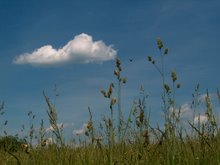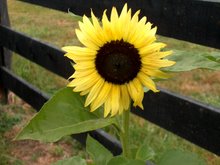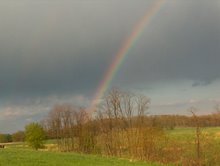July 31, 2007
Editorial
A Factory Farm Near You
Once upon a time, only a decade or so, it wasn’t hard to know where
factory hog farms were because they were nearly all in North Carolina.
But since those days, the practice of crowding together huge
concentrations of animals — hogs, poultry, dairy cows, beef cattle — in
the interests of supposed efficiency has spread around the country.
Wherever it appears, factory farming has two notable effects. It
threatens the environment, because of huge concentrations of animal
manure and lax regulation. And it threatens local political control.
Residents who want a say over whether and where factory farms, whose
stench can be overwhelming, can be built find their voices drowned out
by the industry’s cash and lobbying clout.
These farms are spreading so rapidly that it’s been hard to get an
accurate, up-to-date picture of where they all are. A research and
advocacy group called Food and Water Watch has released an interactive
map — www.factoryfarmmap.org — that
allows users to track the proliferation of factory farms by state and
county, number of farms, type of operation and even number of animals.
The only thing that would make this map more useful — and we hope it
will be an ongoing project — is the ability to track changes over time,
showing how rapid and pervasive the growth of factory farming has been.
It’s important to read this map not as a static record of farm sites or
a mere inventory of animals. It is really a map of overwhelming change
and conflict. It raises two of the fundamental questions facing American
agriculture. Do we pursue the logic of industrialism to its limits in a
biological landscape? And how badly will doing so harm the landscape,
the people who live in it and the democracy with which they govern
themselves?
A Factory Farm Near You
Once upon a time, only a decade or so, it wasn’t hard to know where
factory hog farms were because they were nearly all in North Carolina.
But since those days, the practice of crowding together huge
concentrations of animals — hogs, poultry, dairy cows, beef cattle — in
the interests of supposed efficiency has spread around the country.
Wherever it appears, factory farming has two notable effects. It
threatens the environment, because of huge concentrations of animal
manure and lax regulation. And it threatens local political control.
Residents who want a say over whether and where factory farms, whose
stench can be overwhelming, can be built find their voices drowned out
by the industry’s cash and lobbying clout.
These farms are spreading so rapidly that it’s been hard to get an
accurate, up-to-date picture of where they all are. A research and
advocacy group called Food and Water Watch has released an interactive
map — www.factoryfarmmap.
allows users to track the proliferation of factory farms by state and
county, number of farms, type of operation and even number of animals.
The only thing that would make this map more useful — and we hope it
will be an ongoing project — is the ability to track changes over time,
showing how rapid and pervasive the growth of factory farming has been.
It’s important to read this map not as a static record of farm sites or
a mere inventory of animals. It is really a map of overwhelming change
and conflict. It raises two of the fundamental questions facing American
agriculture. Do we pursue the logic of industrialism to its limits in a
biological landscape? And how badly will doing so harm the landscape,
the people who live in it and the democracy with which they govern
themselves?




















No comments:
Post a Comment